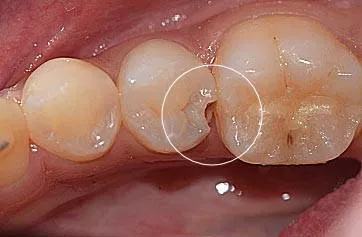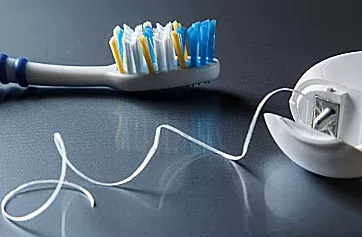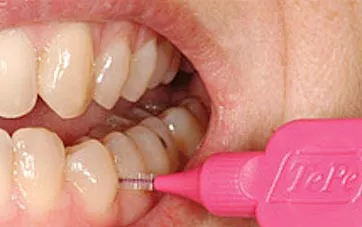General Dentistry
Dentists are highly skilled medical professionals who provide several oral care services that in turn contribute to the health and quality of the patient’s lives. They bear the torch of new developments in the world of dentistry- be it cosmetic, aesthetic makeover, dental implants or computer-aided treatment of patients (CAD-CAM). Dentistry, as a branch of study, constitutes of diagnosis, prevention and treatment of oral and dental diseases, disorders, conditions of the oral cavity or the adjacent related tissues and structures of the jaw.
Recent advancements in dental research include genetic engineering, the discovery of links between oral and systemic diseases, development of new techniques and materials. Dental treatments are generally performed by a team which often consists of dentist specialist, Prosthodontist, orthodontist, pediatric dentist, oral surgeons, periodontist, dental technicians and dental assistants.
What We Offer ?
Tooth Coloured Composite Fillings
Cavities in the tooth still happen even if one takes utmost care of their teeth. But fortunately, there exist different types of fillings for teeth today like composite resins, amalgam, gold, porcelain and resin or glass ionomer.
Composite resins can provide good durability and resistance to fracture in small to midsize filings that needs to withstand relatively moderate amounts of force and pressure from chewing activities. Composite resins, also known as tooth coloured fillings, can completely match one’s actual tooth colour. This enhances the cosmetic aspect of your filling and is the best choice for a filling that looks more natural.


Call Us
080 55440120
OR
Book an Appointment
Scaling and Polishing
There are certain areas in your tooth where toothbrushes just can’t reach. Plaque deposits build up and harden forming tough crusty deposits called calculus or tartar. Scaling removes the plaque and tartar deposits. Often an ultrasound scalar or pressurized water jets are used to get rid of the bulk of tartar followed by hand precision instruments to scrape away leftovers.
Polishing is the next step wherein any remaining roughness due to the build-up is smoothened out. This removes stains from the tooth, making it bright and shiny. Moreover, it smoothes out the tooth surface to prevent further plaque build-up.
Deep Scaling and Curettage (Deep Gingival Curettage)
To prevent gum disease from spreading further or getting critical, periodontal therapy i.e. deep cleaning is advised. Deep scaling is one of those procedures. This specific process gets rid of any tartar deposits or bacteria in damaged tissue pockets and promotes necessary conditions for healing to take place.
Curettage or root planing is not to be confused with scaling. Scaling is simply the process of removing tartar. Curettage or root planing is the process of smoothening the root surfaces and removing any infected tooth and gum structures. This procedure is generally done under local anaesthesia such that the patient experiences painless treatment.
Tooth Sensitivity
Tooth sensitivity occurs when a layer of a tooth underneath the enamel (Dentin) or the layer covering the root (Cememtum) is exposed along the gum line due to receding gums. The exposed surfaces respond to hot and cold, and sometimes to sweets and spicy foods and trigger a momentary pain. There are two common ways in which dentin or cementum can be exposed, gingival recession and tooth wear.
Common causes:
1. Excessive or forceful tooth brushing.
2. Abrasive tooth paste.
3. Acid erosion secondary to gastrointestinal reflux.
4. Excessive consumption of acidic foods and drinks.
At Dixit Dental Care, we treat the tooth sensitivity in a holistic way.
Suggestive treatments are tooth fillings wherever required, application of desensitizing varnish, at home usage of desensitizing tooth paste and mouth wash etc.
Oral Hygiene
Oral hygiene, though important, is often neglected. Proper dental care is not just limited to taking care of your teeth but also caring about the gums holding your teeth, especially because it is one of the foremost causes of tooth loss. Neglected oral hygiene can cause a multitude of issues like bad breath, tooth decay (cavities, dental caries) and gum diseases such as gingivitis and periodontitis. Brushing your teeth twice daily as well as flossing and a trip to the dentists’ twice a year is a simple, yet effective plan to keep your teeth and gum healthy.
Brushing
Brushing your teeth is one of the simplest and the most important part of your daily dental care routine. You should brush your teeth twice daily with a soft bristled brush. The size and shape of your brush must be such that it easily fits in your mouth reaching all areas.
You should replace your toothbrush every three to four months or as soon as the bristles are frayed. Fluoride toothpaste should be used for brushing and techniques like placing your toothbrush at a 45-degree angle to the gums and brushing all the surfaces of your teeth should be followed.

Proximal Brushing
Proximal brushing is one of the most important aspects of keeping your oral hygiene at a maximum while preventing the plaque build-up between your teeth. Plaque between your teeth is one of the leading causes of gum diseases and soon affects adjacent gum tissues.
Proximal brushing is carried out by using special interdental brushes and age-old flossing. Interdental brushes are claimed to clean more effectively especially for patients with braces. It comes in various sizes therefore; you need to pick your size wisely.


Tongue Cleaning
One might wonder as to why is it necessary to brush your tongue if one is diligent about maintaining oral hygiene. Along with brushing and interdental cleaning, tongue cleaning is a very important aspect of maintaining your overall oral hygiene.
The human tongue is a large organ and serves as a host to most of the bacteria that reside within your mouth. Brushing your tongue removes harmful odour build-up. You can brush your tongue using small strokes, beginning at the far back, gradually working your way to the tip. But for most cleaning, a scraper should be used.
Flossing
Flossing is an age-old technique but a very successful way to remove plaque between your teeth. Reports show that using floss every day reduces plaque build-up between your teeth and subsequently prevents a lot of gum problems like inflamed and infected gum.
Flossing is done by cutting off about 18 inches of the floss string and wrapping the most of it around your fingers. Then the remaining is pushed up between your teeth. The floss should then be pulled tight and shall be slid up and down against your tooth surface under your gum line taking care not to injure yourself.

